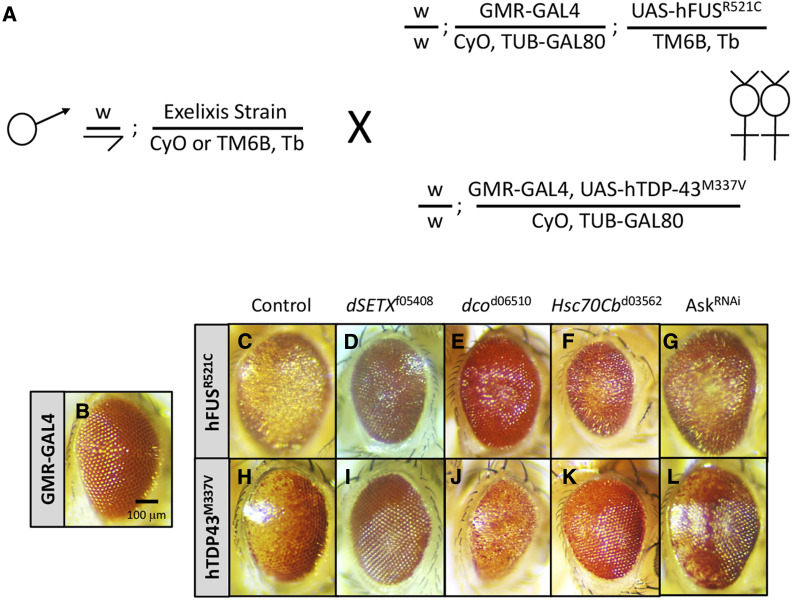Figure 1.
Screening strategy and primary screen validation. (A) Schematic of primary screens for Exelixis insertions that alter degenerative eye phenotypes associated with w; GMR-GAL4; UAS-hFUSR521C (GMR-hFUSR521C) and w; GMR-GAL4, UAS-hTDP-43M337V (GMR-hTDP-43M337V). These transgenic Drosophila models display photoreceptor degeneration/rough-eye phenotypes that are fully penetrant and dosage-sensitive (Ritson et al. 2010; Lanson et al. 2011; Periz et al. 2015). For the primary screen, we generated F1 individuals carrying an Exelixis insertion in trans with either GMR-hFUSR521C or GMR-hTDP-43M337V, which were scored for enhancement or suppression of the eye degeneration phenotype. All primary screen positive inserts were retested in a validation screen using an identical crossing scheme to confirm the initially observed interaction(s). (B) Control GMR-GAL4 heterozygous individual. The eyes of (C) GMR-hFUSR521C and (H) GMR-hTDP-43M337V heterozygous animals displaying degenerative, pigmentation, and rough-eye phenotypes. (D–G) GMR-hFUSR521C and (I–L) GMR-hTDP-43M337V were modulated by Exelixis inserts disrupting genes with known associations to ALS: (D and I) dSenataxinf05408, (E and J) discs overgrownd06510, (F and K) Hsc70Cbd03562, and an (G and L) GAL4-inducible RNAi allele Ask132464. All eyes shown are representative images from individual females. Exelixis stock IDs and Drosophila gene symbols are listed, Ask1RNAi refers to Bloomington Strain ID (BSID) 32464.

